Having spent their entire lives with nature, indigenous peoples developed their own ecological wisdom, allowing them to co-exist with the mountains using their knowledge, be it in response to climate change, animal behavior, or plant use. Considering the fact that supplies in the old days were not as abundant, plant resource applications in our ancestors' lives were critical, and could be discovered everywhere from food, clothing, housing, medicine to religion.
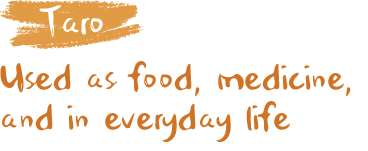
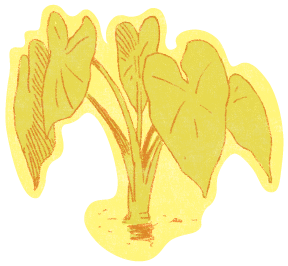
Prior to dietary influence from the non-indigenous society, taro was an important staple food for indigenous peoples. Taro is extremely adaptive to the environment, tolerant to drought, heat, and humidity with few insect diseases, and easy to plant in either field, paddy field, or mountain land. It is often the main feature on many dining tables. In addition to food, the taro leaf is broad with a thick stalk, useful as emergency umbrella in the rain. The Paiwan people also chops the taro leaf as antidote for bee stings and insect bites.


Although taro, millet, and sweet potato are well-known staple food for indigenous peoples, pigeon pea is not to be forgotten. The Pangcah, Atayal, and Bunun peoples all consume pigeon pea as staple food. The protein level is high in pigeon pea, and very good for the stomach and digestion; consuming pigeon pea root stew can also alleviate fever and detoxify while stopping the bleeding and pain. Pigeon pea is rich in zinc and minerals, and many ethnic groups consume it to increase fertility.

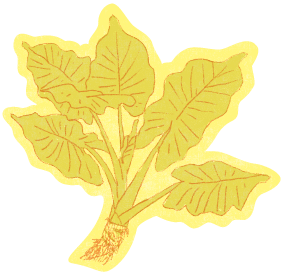
Resembling taro in appearance, the Giant Elephant's Ear is extremely viable and often see in wet environments. The Giant Elephant's Ear is poisonous and cannot be consumed, but its gigantic leaf is extremely useful. In the wild, the leaf can be used to carry water and as umbrella; when building temporary hunting or construction huts, the leaves are often used to cover the roof and provide shield from wind and rain. In daily life, the leaf is used to wrap food, for example when a hunter comes back from hunting and shares the game, the leaf of the Giant Elephant's Ear is used to wrap the meat. Most importantly, accidental brushes against stinging nettles including Urtica thunbergiana and Dendrocnide meyeniana, causing the skin to irritate, applying the sap of the Giant Elephant's Ear can help alleviate the symptom.
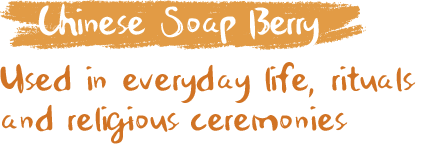

Before there were shampoo and shower gel, Chinese Soap Berry was the best cleaning produce. The pulp of Chinese Soap Berry has saponin, foam is produced when rubbed in water and can be used to wash and clean. With its amazing cleaning function, the Paiwan and Makatao peoples use the Chinese Soap Berry seeds as the divine beads in divination, and apply to blessing, healing, or fortune-telling in indigenous communities. The Bunun people even name their children dahu, in the namesake of dahudahu, the Chinese Soap Berry, a symbol of health, fitness, and bearing many children.

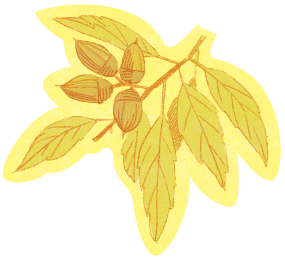
The ring-cupped oak is nicely flammable and enduring, can burn even when the timber is wet. It is commonly used for daily wood burning and fire divination. With its hardness, the ring-cupped oak twig can be made into slings, the branch as spear, and handle for hoe and knife, and the trunk as mortar for dehulling the rice. The hunter also uses ring-cupped oak to make stakes to capture animals, and keep them from escaping. The texture is so strong that it can even be used as building material. Also, ring-cupped oak is a natural plant dye for color.
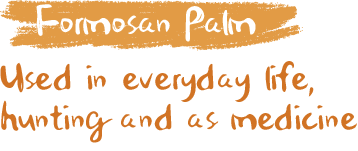
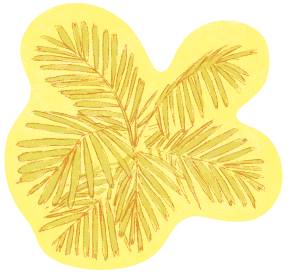
Formosan Palm can be found everywhere, so it is extremely wide used in the indigenous society. The large feather-shaped leaf can be used to make a broom. It is also a good decoration for rituals and ceremonies. In the wild, small animals, such as the masked palm civet, consumes the fruit of Formosan Palm. Therefore, hunters will place traps around the perimeter of Formosan Palm based to the behaviors of the animals, and lure the animals with the fruit. In addition, the tend leaves of the Formosan Palm can also be used to stop the bleeding.
According to the sun-shooting legend of the Bunun people, there used to be two suns in the sky. One day, a baby died from the strong blazing heat and became a lizard. The father and older brother of the baby decided to avenge by shooting down the sun. They shielded themselves from the sun with the Formosan Palm leaf, and shot down one of the suns from between the leaves. The legend shows how durable Formosan Palm is to the sun and heat.
The Kanakanavu people hosts the river festival after typhoon seasons. Since the traditional male garment is red, to prevent the bright color from attracting evil things, the male would cover themselves with raincoats made from Formosan Palm. After the ceremony ends, the Kanakanavu people will stack stones on top of the Formosan Palm raincoats to mark the river sections, notifying the river god that this is the range in which their people will be fishing, and ask that the river god protect their safety and bless them with good harvests.
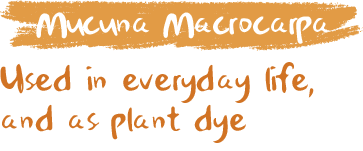

Mucuna macrocarpa has bright red sap which can be used as red dye. The stem is strong and flexible, and very useful in tying up things. The Rukai and Paiwan peoples build swings for rituals or weddings, and the main rope for the swing is made from Mucuna macrocarpa, which shows its tenacity.

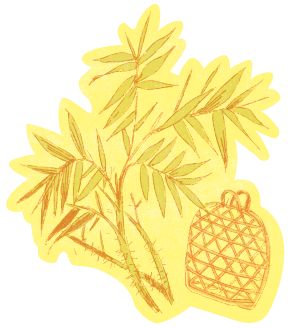
Yellow Rotang Palm is an important rattan species in the indigenous society. It can be found everywhere from backpacks, baskets, headbands, reinforcement of housing structure to fastening of traps, the highly flexible and strong Yellow Rotang Palm with great plasticity is always used. It is said that in the old days, if a hunter fails to hunt any game, he will gather some Yellow Rotang Palm home for daily use instead of coming home empty-handed. The use of Yellow Rotang Palm is diverse, the stem is sweet and can be cooked as soup or salad, a common wild vegetable dish.
How to differentiate poisonous plants in the wild?
- Plants with milky sap, such as the mulberry family and composite family, are more or less poisonous and must be consumed with care.
- When in doubt, place a piece on the tongue, and if it feels stingy or spicy hot, do not go on to consume it.
- Wild vegetables and fruits that are consumed by bird, wild rat, or mammals can often be consumed by man as well. Plants that are intact within the moving range of herbivores should be left alone, because even animals know it cannot be consumed!
- Everyone knows that colorful plants should best be left alone, but colorful wild mushrooms are not necessarily poisonous, while the less colorful ones are not necessarily safe either, so it's best to steer clear from all mushrooms.
—References—
鄭漢文、胡金勝、胡琢偉(2016)。《布農族植物文化:解開布農族植物密碼》。臺東縣:桃源國民小學。
劉正元、邱碧華(2020)。《卡那卡那富族民族植物》。高雄市:國立高雄師範大學語言與文化學士原住民專班。
魯丁慧、柯勇男、林聖峰(2011)。《排灣族之植物利用》。台北市:行政院農業委員會林務局。
魯丁慧、陸象豫(2013)。《邵族之植物利用》。臺北市:行政院農業委員會林務局。
吳雪月(2006)。《台灣新野菜主義》。天下文化。




